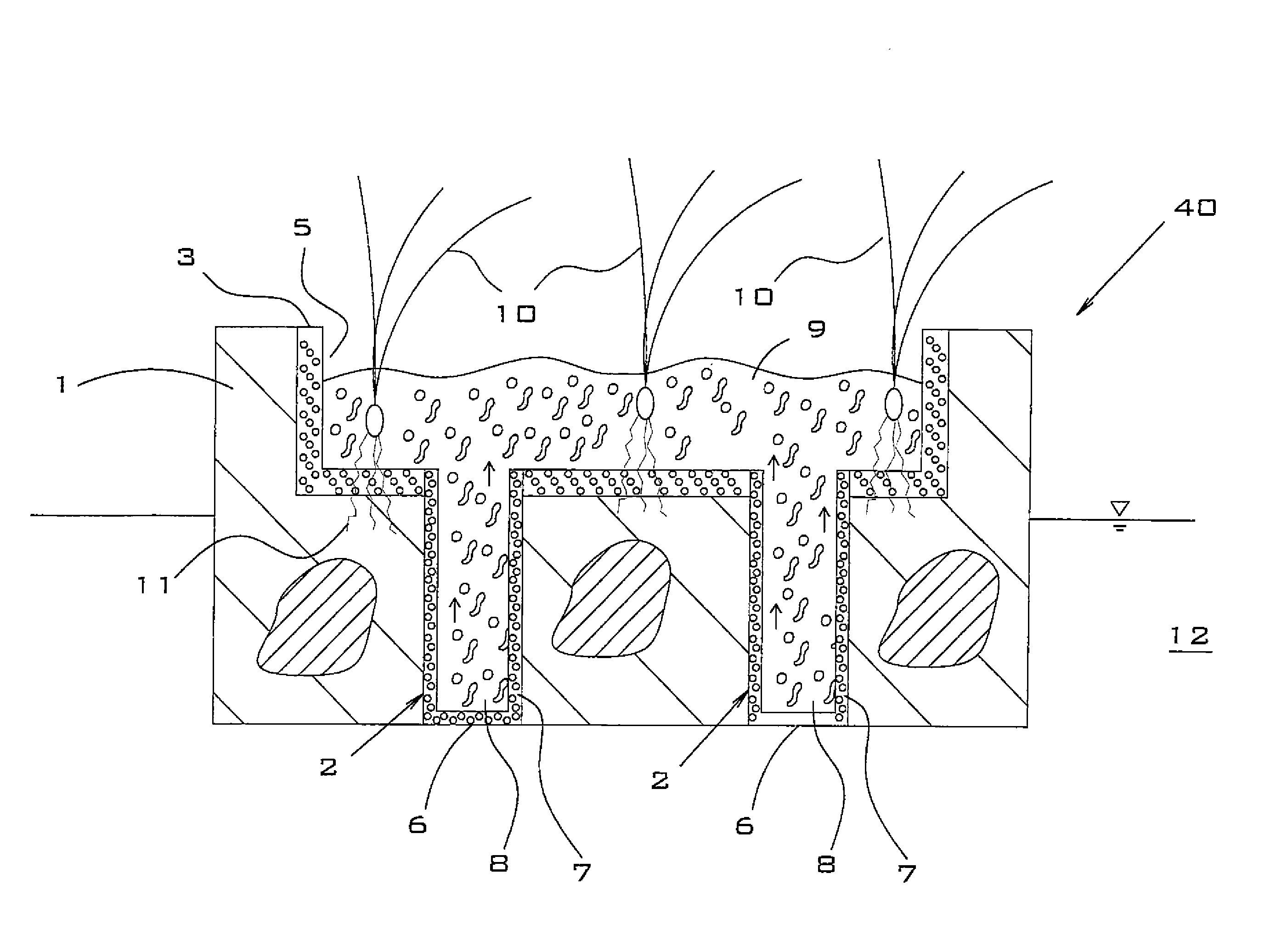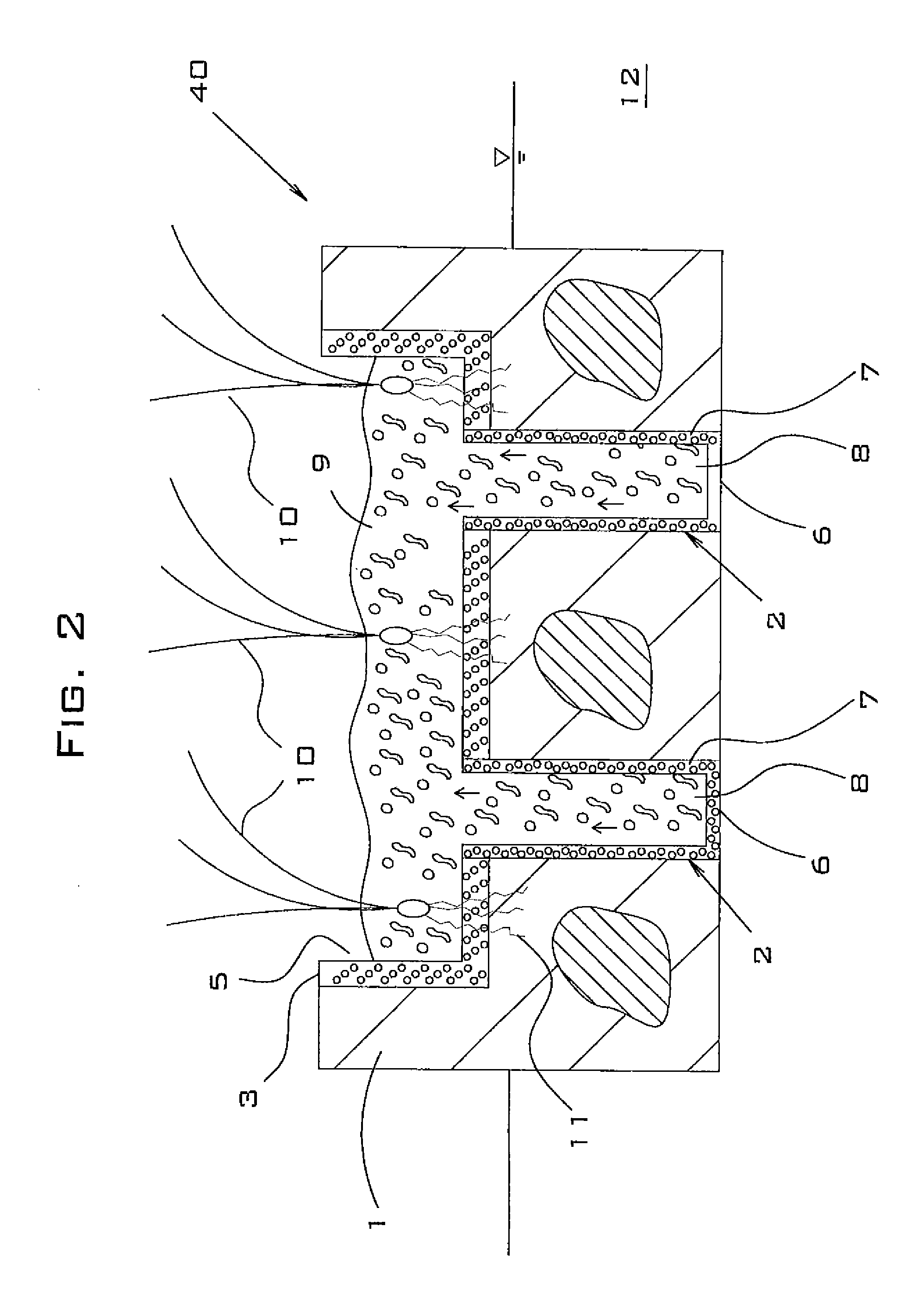Combination-cell foam floating island
a foam island and cell technology, applied in the field of floating islands, can solve the problems of fragile methods of providing buoyancy, and achieve the effects of reducing manufacturing costs, preventing soil loss, and providing buoyancy
- Summary
- Abstract
- Description
- Claims
- Application Information
AI Technical Summary
Benefits of technology
Problems solved by technology
Method used
Image
Examples
Embodiment Construction
[0090]Referring to FIG. 1, a preferred embodiment of floating island 40 is illustrated that comprises island body 1, wicking cups 2 and shaped liner 3 for preventing the loss of growth medium. Island body 1 is preferably further comprised of a nonwoven thermosetting or thermoplastic fiber matrix 4 that has central cavity 5 and bottom cutout holes 6. Wicking cups 2 are preferably comprised of outer layer 7 and central portion 8. Central portion 8 is preferably filled with growth medium that has been formulated to have wicking ability.
[0091]An example of a suitable growth medium is BIOMIX® manufactured by Floating Island International of Shepherd, Mont. BIOMIX is a mixture comprising a hydrophilic polymer foam and a plurality of organic materials such as peat and bark.
[0092]Outer layer 7 is preferably comprised of thermoplastic polymer foam that has been manufactured specifically to have a combination of open cell and closed cell pore spaces within the polymer material (to comprise a ...
PUM
 Login to View More
Login to View More Abstract
Description
Claims
Application Information
 Login to View More
Login to View More - R&D
- Intellectual Property
- Life Sciences
- Materials
- Tech Scout
- Unparalleled Data Quality
- Higher Quality Content
- 60% Fewer Hallucinations
Browse by: Latest US Patents, China's latest patents, Technical Efficacy Thesaurus, Application Domain, Technology Topic, Popular Technical Reports.
© 2025 PatSnap. All rights reserved.Legal|Privacy policy|Modern Slavery Act Transparency Statement|Sitemap|About US| Contact US: help@patsnap.com



